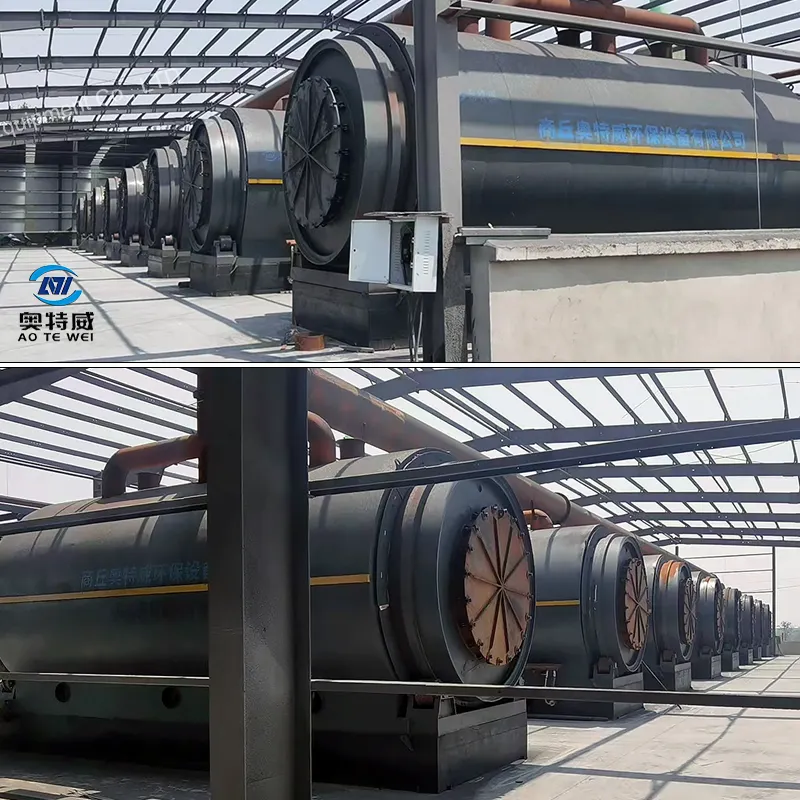The recycling industry is witnessing a revolutionary transformation with the integration of continuous pyrolysis equipment into modern waste management facilities. This innovative technology offers a sustainable solution for converting various waste materials into valuable resources while minimizing environmental impact. Understanding how to select the right continuous pyrolysis equipment is crucial for recycling plant operators who aim to optimize their operations and maximize returns on investment.
As environmental regulations become stricter and the demand for sustainable waste management solutions continues to grow, recycling plants must adapt by implementing efficient and reliable processing systems. Continuous pyrolysis equipment represents a significant advancement in this field, offering uninterrupted operation and higher throughput compared to batch processing systems.
Modern continuous pyrolysis equipment incorporates sophisticated temperature control systems that ensure optimal processing conditions throughout the operation. These systems utilize multiple temperature zones, each carefully monitored and adjusted to maintain precise thermal conditions. The ability to control temperature with high accuracy directly impacts the quality of end products and the overall efficiency of the pyrolysis process.
Advanced sensors and automated control systems work in tandem to maintain consistent temperatures across different chambers of the continuous pyrolysis equipment. This level of precision ensures uniform heat distribution and prevents hot spots that could compromise product quality or equipment longevity.
The effectiveness of continuous pyrolysis equipment largely depends on its material handling capabilities. Modern systems feature automated feeding mechanisms that ensure consistent material flow and prevent system blockages. These feeding systems are designed to handle various waste materials, from plastic to rubber, while maintaining optimal processing conditions.
Equally important are the discharge systems that efficiently remove processed materials and byproducts. Advanced continuous pyrolysis equipment incorporates sealed discharge mechanisms that prevent air infiltration while maintaining system pressure and temperature stability.
When selecting continuous pyrolysis equipment, energy efficiency should be a primary consideration. Modern systems incorporate heat recovery mechanisms that capture and utilize thermal energy from the process, significantly reducing operating costs. This recovered energy can be used to preheat incoming materials or support other facility operations.
The most advanced continuous pyrolysis equipment features integrated heat exchangers and thermal oil systems that maximize energy utilization. These systems can achieve energy recovery rates of up to 85%, making them highly economical for long-term operation.
Regular maintenance is crucial for the longevity and efficient operation of continuous pyrolysis equipment. Leading manufacturers design their systems with easy-access maintenance points and modular components that simplify repair and replacement procedures. This attention to maintenance-friendly design helps minimize downtime and reduce long-term operating costs.
Durability features such as high-grade refractory linings and corrosion-resistant materials ensure that the equipment can withstand the harsh conditions of continuous operation. These design elements contribute to extended equipment life and reduced maintenance requirements.
Modern continuous pyrolysis equipment must meet stringent environmental regulations regarding emissions and waste management. Advanced systems incorporate multiple stages of gas cleaning and filtration to ensure compliance with environmental standards. These may include cyclone separators, scrubbers, and activated carbon filters that effectively remove pollutants from process gases.
The latest continuous pyrolysis equipment designs also feature real-time emission monitoring systems that provide operators with immediate feedback on environmental performance. This enables quick adjustments to maintain compliance and optimal operation.
Safety is paramount in pyrolysis operations, and modern equipment includes multiple layers of safety systems. These include emergency shutdown mechanisms, pressure relief valves, and sophisticated monitoring systems that detect and respond to potential hazards. Advanced continuous pyrolysis equipment also incorporates flame arrestors and explosion-proof components in critical areas.
Automated safety protocols and interlocking systems ensure that operators can safely manage the equipment while minimizing the risk of accidents or equipment damage. These features are essential for maintaining a safe working environment and protecting valuable assets.

The integration of advanced control systems in continuous pyrolysis equipment allows for precise process management and optimization. Modern systems feature programmable logic controllers (PLCs) and human-machine interfaces (HMIs) that provide operators with comprehensive control over all aspects of the pyrolysis process.
Remote monitoring capabilities enable operators to track system performance and make adjustments from anywhere in the facility or even off-site. This level of control ensures consistent operation and allows for rapid response to any process deviations.
Modern continuous pyrolysis equipment includes sophisticated data collection and analysis systems that help optimize performance and troubleshoot issues. These systems track key performance indicators, maintenance schedules, and operational parameters, providing valuable insights for process improvement.
Advanced reporting features generate detailed operational reports that help facilities maintain compliance records and identify opportunities for efficiency improvements. This data-driven approach to equipment management helps maximize return on investment and ensure optimal performance.
The processing capacity of continuous pyrolysis equipment varies depending on the model and design, typically ranging from 10 to 50 tons per day for standard industrial units. Larger systems can process up to 100 tons daily, while smaller units might handle 5-10 tons per day. The actual capacity depends on factors such as feed material characteristics and desired end products.
Continuous pyrolysis equipment offers several advantages over batch systems, including higher throughput, better energy efficiency, and more consistent product quality. While batch systems require cooling and reheating between cycles, continuous systems maintain stable operating conditions, resulting in lower energy consumption and reduced wear on components.
Modern continuous pyrolysis equipment can process a wide range of materials, including waste tires, plastic waste, biomass, and municipal solid waste. The equipment can be configured to handle specific feed materials through adjustments in operating parameters and processing conditions. However, it's important to verify material compatibility with the specific system design before implementation.
Regular maintenance for continuous pyrolysis equipment includes inspection of wear components, cleaning of heat exchange surfaces, calibration of sensors and control systems, and periodic replacement of seals and gaskets. The frequency of maintenance activities depends on operating conditions and throughput, but most systems require scheduled maintenance every 3-6 months for optimal performance.
 Hot News
Hot News2024-09-25
2024-09-18
2024-09-12
2024-09-05
2024-08-30
2024-08-23

Copyright © 2025 by Shangqiu AOTEWEI environmental protection equipment Co.,LTD Privacy policy